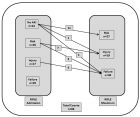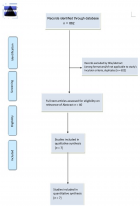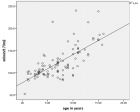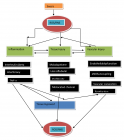Table of Contents
Lessons from the success and failures of peritoneal Dialysis-Related Brucella Peritonitis in the last 16 years: Case report and Literature review
Published on: 31st December, 2018
OCLC Number/Unique Identifier: 7964745961
Brucellosis is a zoonotic infection that is endemic in some Mediterranean countries, North Africa and the Middle East. Brucella is a rare cause of peritonitis in Peritoneal Dialysis (PD) population and in non-dialysis patients alike. We report here a challenging case of PD-related Brucella peritonitis in a 45-year-old Saudi male with late peritonitis that delivered some key learning throughout its course from presentation, diagnosis and treatment to catheter salvage attempts so as to circumvent PD failure. We provide an in-depth review of limited published literature on PD-related Brucella peritonitis (seven cases, and present case) and summarized the data on key clinical characteristics, management and PD technique outcome to benefit nephrologists when encountered with this rare presentation.
Liver cyst infection in kidney transplant patient with autosomal dominant polycystic kidney disease: Interest of PET/CT in diagnosis and treatment
Published on: 14th December, 2018
OCLC Number/Unique Identifier: 7964794073
Liver cyst infection in patients with autosomal dominant polycystic kidney disease (ADPKD) is a rare but life-threatening complication. Diagnosis and treatment remain challenging. We report the case of a 64-year-old kidney transplant patient presenting with fever and abdominal pain. The diagnosis of liver cyst infection was made by positron emission tomography scan (PET/CT). Moreover, the course of our patient illustrates the interest of subsequent PET/CT during follow-up as our patient failed on antibiotherapy and required liver cyst drainage.
Urine Leak Following Kidney Transplantation: An Evidence-based Management Plan
Published on: 2nd October, 2018
OCLC Number/Unique Identifier: 7869210591
Care of kidney transplant recipient remains complex and long-term graft survival is not seen in every transplant recipient. Due to reduced supply and increased demand of human organs, more transplants are carried out using marginal grafts on emergency lists. Transplant recipients have altered physiology due to known end-stage renal disease, recent surgery and the use of potent analgesic and immunosuppressive medications. Amongst the known surgical complications, urine leak remains the most common. It can result from poor graft preparation due to excessive peri ureteric or lower pole dissection or damage to lower polar artery resulting in ischemic necrosis. In addition, poor surgical technique, bladder outflow obstruction, iatrogenic injury to bladder or renal pelvis may contribute to urine leak. Ongoing urine leak may manifest itself as swelling, pain, high drain output, sepsis, ileus and eventual graft loss. Early identification, localisation and quantification of leak remain essential in management of these patients. In addition, sepsis should be identified and treated promptly as these patients are highly susceptible to infections. Early recognition of this complication can significantly reduce hospital stay, improve quality of life and reduce graft loss and mortality. In this article, we aim to develop an evidence-based management approach to a patient with urine leak using a clinical scenario.
A case report of Hypocomplementemic urticarial vasculitic syndrome presenting with Renal failure
Published on: 12th September, 2018
OCLC Number/Unique Identifier: 7856112439
We present a case of hypocomplementemic urticarial vasculitic syndrome (HUVS) who developed severe renal failure requiring ICU-level care. Our patient is a 66-year-old man who presented with abdominal pain, rash, confusion, oliguria, and shortness of breath. He was found to be in acute renal failure with leukocytosis and elevated lactate. Work-up for infectious, autoimmune, and hematologic malignant diseases was negative. The presence of chronic urticaria, abdominal pain, hypocomplementemia, and leukocytoclastic vasculitis on skin biopsy confirmed the diagnosis of HUVS. He required hemodialysis for renal failure as well as gastrostomy tube placement for nutritional support secondary to the development of mucosal ulcers, a rare finding in HUVS. He recovered with several months of high-dose steroids and hemodialysis. This case highlights the effectiveness of steroids for initial treatment of HUVS, and the relapsing and remitting nature of the disease. Providers should also be aware of the broad range of presenting symptoms such as mucosal lesions that may require nutritional support. Interestingly, unlike many previously reported cases of HUVS, our patient had not yet developed signs and symptoms of systemic lupus erythematosus, which often overlaps with HUVS.

HSPI: We're glad you're here. Please click "create a new Query" if you are a new visitor to our website and need further information from us.
If you are already a member of our network and need to keep track of any developments regarding a question you have already submitted, click "take me to my Query."

























































































































































